


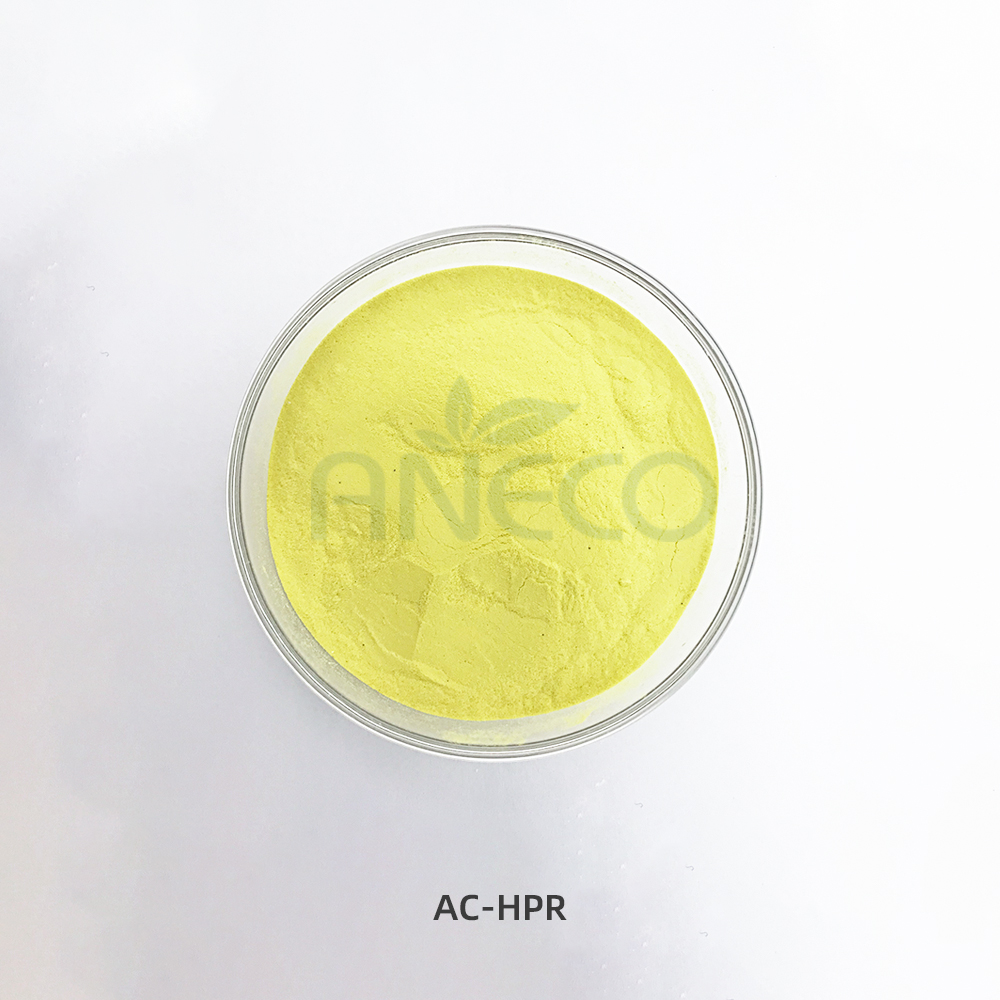
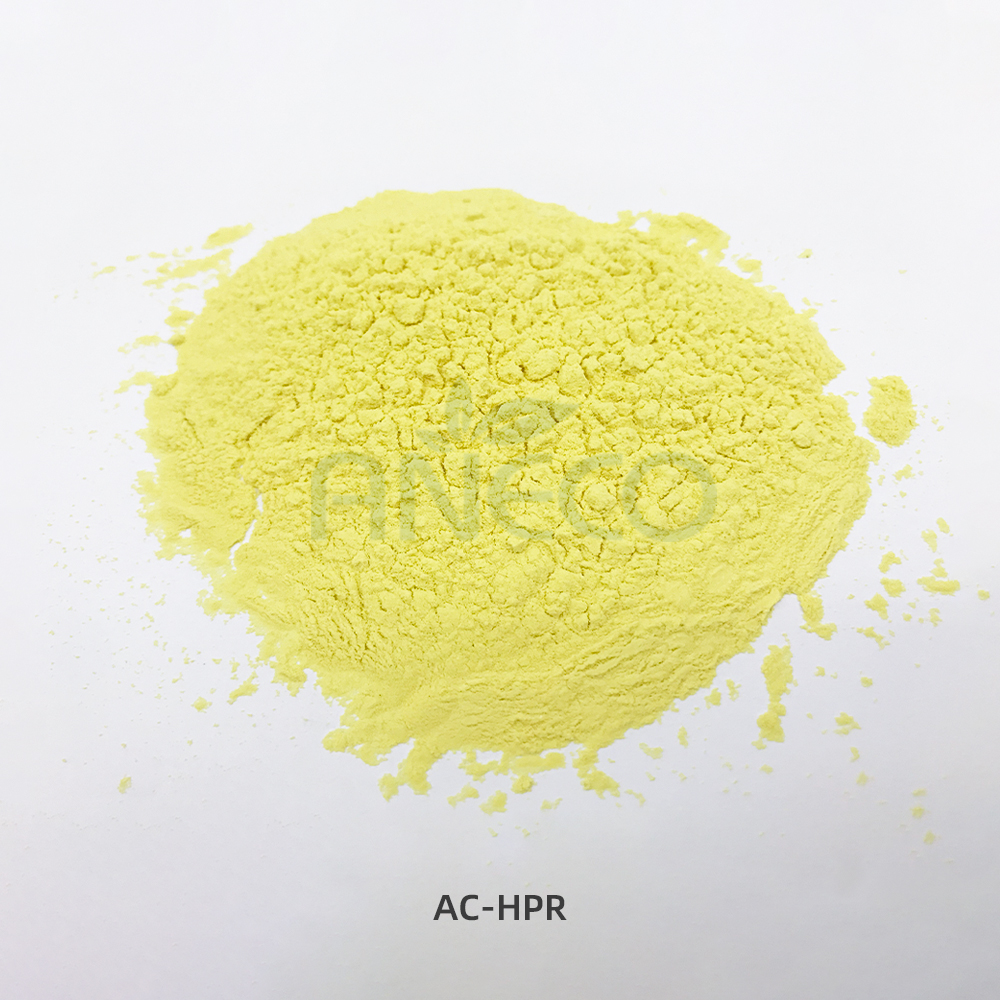
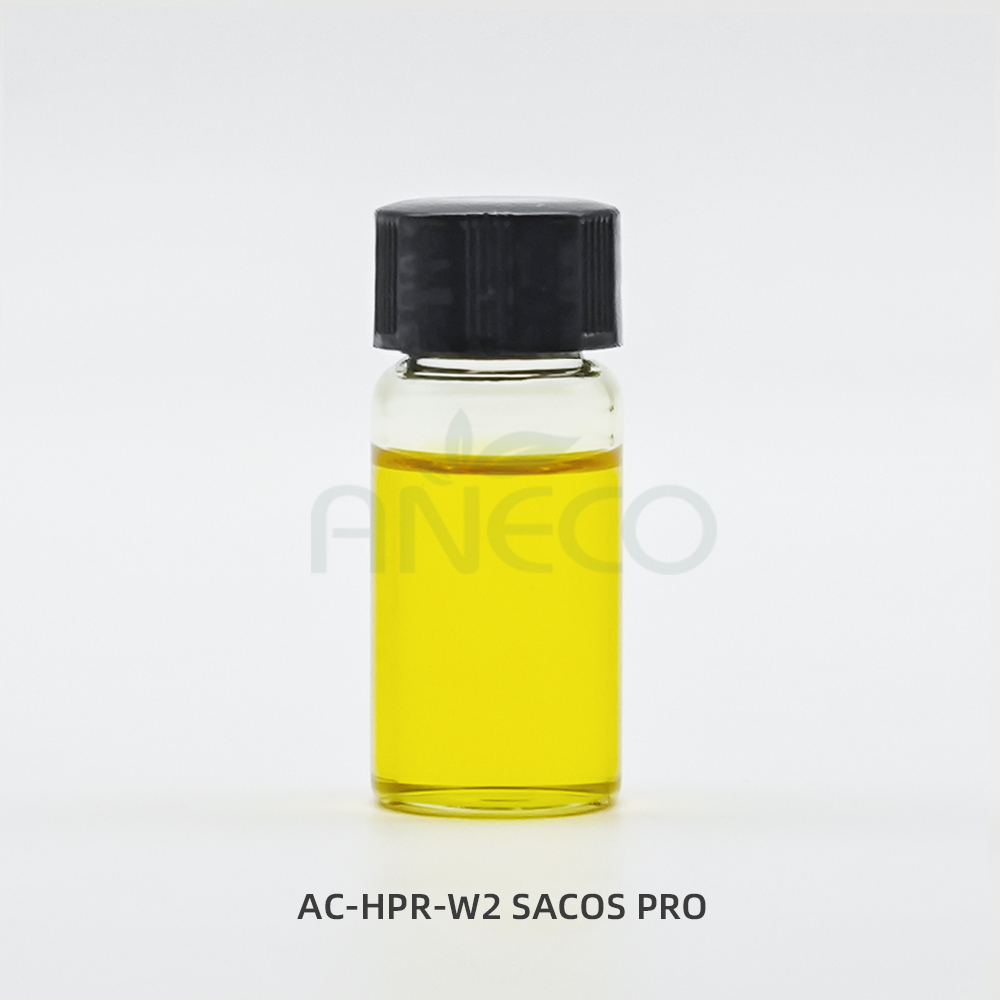
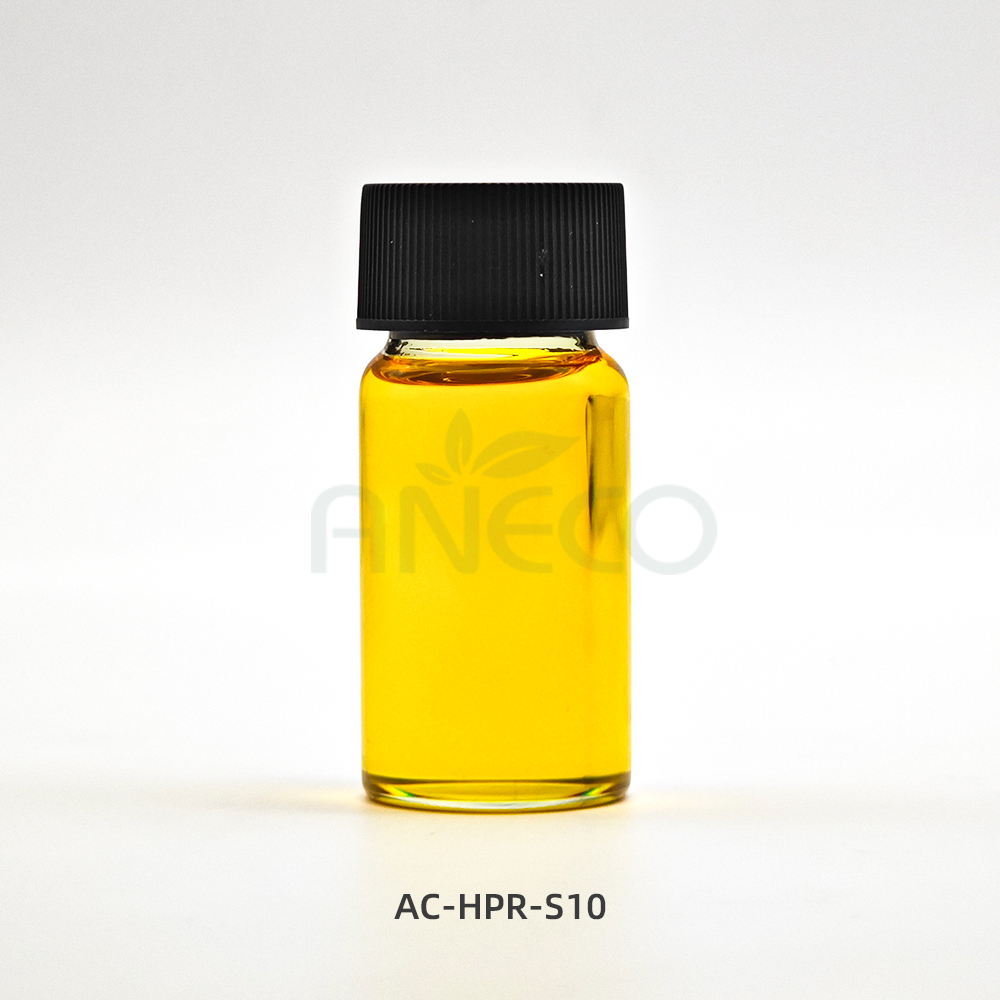
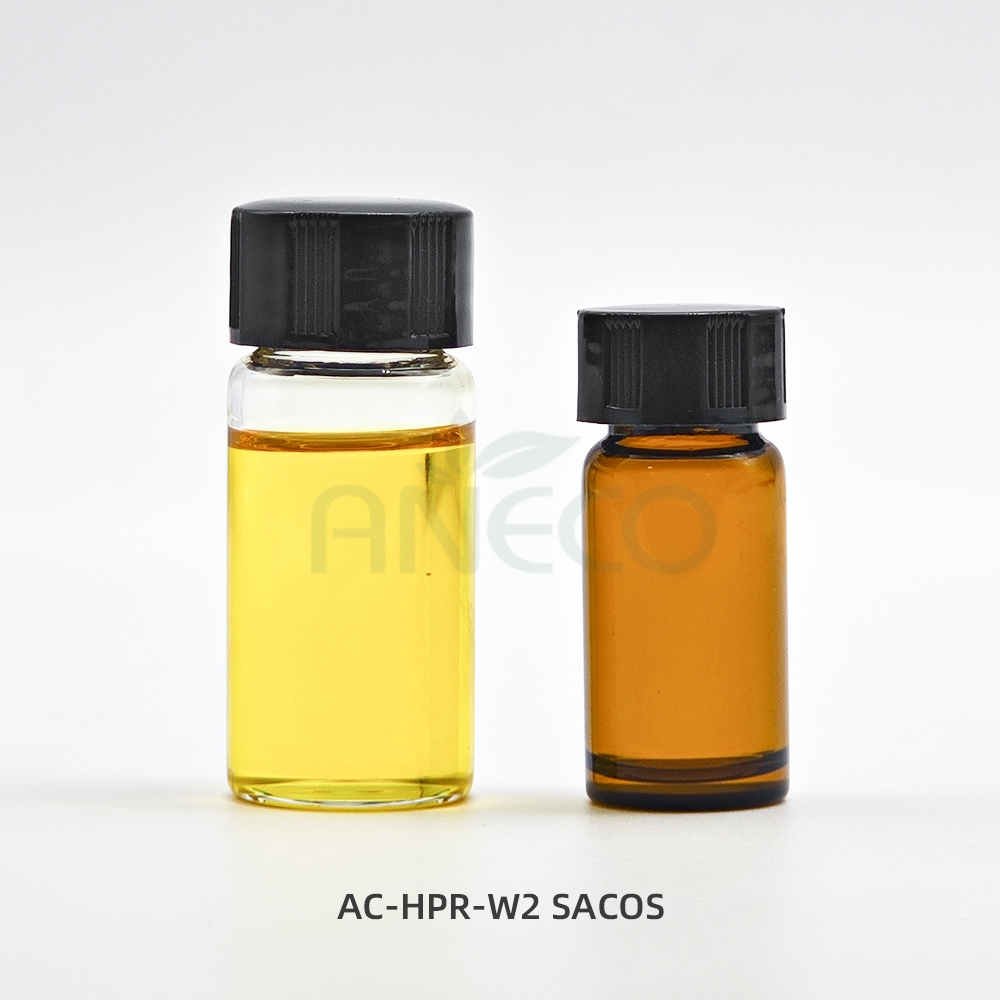
HPR Series
We have developed four sizes of HPR, including oil-soluble powder and solvent-based, water-soluble, and synergistic dosage forms with glucoraphanin. This gives formulators the flexibility to choose according to different application scenarios.
HPR, as a new generation of anti-aging star, not only excels in anti-aging, but also effectively targets oily skin problems such as greasiness and acne. Its unique structure allows it to act directly on skin cell receptors without the need for metabolic transformation, with the advantages of high efficiency, mildness and low irritation.

REQUEST A SAMPLE
BACKGROUND

Since the 1970s, retinoic acid has been known for its anti-aging effects—but irritation and instability limited its use. Retinol gained popularity in the 1990s but faced similar challenges, prompting the search for safer, more effective alternatives.
Hydroxypinacolone Retinoate (HPR) emerged to meet this need. As a stable, non-irritating retinoid that directly binds to cellular retinoic acid receptors, HPR delivers the efficacy of retinoic acid with improved skin tolerance and formulation stability—bridging the gap between clinical results and cosmetic usability.
DESCRIPTION

AC-HPR is a new generation direct acting retinoic acid derivative. It’s one of the most bio-available forms of Vitamin A synthesized from retinoic acid and small molecule pinacol. AC-HPR widely goes into the formulation of oil-in-water, water-in-oil and other formula types, such as emulsions, serums and anhydrous systems.
BASIC INFORMATION

| Product Name | AC-HPR |
|---|---|
| INCI Name | Hydroxypinacolone Retinoate |
| CAS No. | 893412-73-2 |
| Purity (HPLC) | ≥99% |
| Recommended Dosage | 0.01‰-0.3% |
UNIQUE EFFECTS

1. Barrier and moisturising optimization: Barrier repair, Lipid homeostasis
2. Strengthening of anti-aging mechanisms: Basement membrane protection, Protein expression enhancement
3. Hypoallergenic and anti-irritant properties: Signalling pathway modulation
ADVANTAGES

• High Safety: Non-phototoxic, Non-irritating
• High Stability: Thermal stability Suitable around pH 6
• Direct effect: Unique structure No conversion required
Q&A

Q1: How does HPR compare to other retinoids?
A1: Compared to other forms of Vitamin A derivative, HPR delivers superior efficacy. Unlike retinyl esters that require multi-step conversion to become active, HPR is directly bioactive. While retinol oxidizes readily, HPR demonstrates enhanced stability. In contrast to tretinoin’s irritation potential, HPR’s esterified structure offers greater gentleness without photosensitivity, making it better suited for sensitive skin.
Q2: What are the applications and formulation suggestions for HPR?
A2:Recommended in night time and treatment applications
Formulations containing additional active ingredients, photostabilizers, and even daily-use sunscreen demonstrate superior stability compared to single-component systems
These conditions can help stabilize HPR: antioxidants, chelating agents, neutral pH, dark and air-tight containers
BACKGROUND

Since the 1970s, retinoic acid has been known for its anti-aging effects—but irritation and instability limited its use. Retinol gained popularity in the 1990s but faced similar challenges, prompting the search for safer, more effective alternatives.
Hydroxypinacolone Retinoate (HPR) emerged to meet this need. As a stable, non-irritating retinoid that directly binds to cellular retinoic acid receptors, HPR delivers the efficacy of retinoic acid with improved skin tolerance and formulation stability—bridging the gap between clinical results and cosmetic usability.
DESCRIPTION

AC-HPR-S10 is a new generation direct acting retinoic acid derivative. It’s one of the most bio-available, nonprescription forms of Vitamin-A sold in cosmetics and easily formulated anhydrous matrix containing 10% Hydroxypinacolone Retinoate(HPR)in a premium delivery solvent.
BASIC INFORMATION

| Product Name | AC-HPR-S10 |
|---|---|
| INCI Name | Hydroxypinacolone Retinoate & Dimethyl Isosorbide |
| CAS No. | 893412-73-2 & 5306-85-4 |
| Recommended Dosage | 0.01‰-0.3% |
UNIQUE EFFECTS

1. Barrier and moisturising optimization: Barrier repair, Lipid homeostasis
2. Strengthening of anti-aging mechanisms: Basement membrane protection, Protein expression enhancement
3. Hypoallergenic and anti-irritant properties: Signalling pathway modulation
ADVANTAGES

• High Safety: Non-phototoxic, Non-irritating
• High Stability: Thermal stability Suitable around pH 6
• Direct effect: Unique structure No conversion required
Q&A

Q1: How does HPR compare to other retinoids?
A1: Compared to other forms of Vitamin A derivative, HPR delivers superior efficacy. Unlike retinyl esters that require multi-step conversion to become active, HPR is directly bioactive. While retinol oxidizes readily, HPR demonstrates enhanced stability. In contrast to tretinoin’s irritation potential, HPR’s esterified structure offers greater gentleness without photosensitivity, making it better suited for sensitive skin.
Q2: What are the applications and formulation suggestions for HPR?
A2:Recommended in night time and treatment applications
Formulations containing additional active ingredients, photostabilizers, and even daily-use sunscreen demonstrate superior stability compared to single-component systems
These conditions can help stabilize HPR: antioxidants, chelating agents, neutral pH, dark and air-tight containers
BACKGROUND

Since the 1970s, retinoic acid has been known for its anti-aging effects—but irritation and instability limited its use. Retinol gained popularity in the 1990s but faced similar challenges, prompting the search for safer, more effective alternatives.
Hydroxypinacolone Retinoate (HPR) emerged to meet this need. As a stable, non-irritating retinoid that directly binds to cellular retinoic acid receptors, HPR delivers the efficacy of retinoic acid with improved skin tolerance and formulation stability—bridging the gap between clinical results and cosmetic usability.
DESCRIPTION

AC-HPR-W2 SACOS is a water-soluble HPR developed by using cosolvency technology, which effectively solves the application problem of HPR in aqueous system.
BASIC INFORMATION

| Product Name | AC-HPR-W2 SACOS |
|---|---|
| INCI Name | Hydroxypinacolone Retinoate |
| CAS No. | 893412-73-2 |
| Solubility | Water |
| Recommended Dosage | 0.05-5% |
UNIQUE EFFECTS

1. Barrier and moisturising optimization: Barrier repair, Lipid homeostasis
2. Strengthening of anti-aging mechanisms: Basement membrane protection, Protein expression enhancement
3. Hypoallergenic and anti-irritant properties: Signalling pathway modulation
ADVANTAGES

• Water Solubility: Dissolves quickly in water
• Cosolvent Technology: Enhance transdermal absorption efficiency
• Stability: Ease of formulation
Q&A

Q1: How does HPR compare to other retinoids?
A1: Compared to other forms of Vitamin A derivative, HPR delivers superior efficacy. Unlike retinyl esters that require multi-step conversion to become active, HPR is directly bioactive. While retinol oxidizes readily, HPR demonstrates enhanced stability. In contrast to tretinoin’s irritation potential, HPR’s esterified structure offers greater gentleness without photosensitivity, making it better suited for sensitive skin.
Q2: What are the applications and formulation suggestions for HPR?
A2:Recommended in night time and treatment applications
Formulations containing additional active ingredients, photostabilizers, and even daily-use sunscreen demonstrate superior stability compared to single-component systems
These conditions can help stabilize HPR: antioxidants, chelating agents, neutral pH, dark and air-tight containers
BACKGROUND

Since the 1970s, retinoic acid has been known for its anti-aging effects—but irritation and instability limited its use. Retinol gained popularity in the 1990s but faced similar challenges, prompting the search for safer, more effective alternatives.
Hydroxypinacolone Retinoate (HPR) emerged to meet this need. As a stable, non-irritating retinoid that directly binds to cellular retinoic acid receptors, HPR delivers the efficacy of retinoic acid with improved skin tolerance and formulation stability—bridging the gap between clinical results and cosmetic usability.
DESCRIPTION

AC-HPR-W2 SACOS PRO is a new water-soluble vitamin A derivative anti-aging active ingredient. By adding AC-GR-01, which acts as a natural antioxidant, AC-HPR-W2 SACOS PRO behaves improved stability and achieves synergism double anti-aging.
BASIC INFORMATION

| Product Name | AC-HPR-W2 SACOS PRO |
|---|---|
| INCI Name | Hydroxypinacolone Retinoate & Glucosylrutin |
| CAS No. | 893412-73-2 & 130603-71-3 |
| Solubility | Water |
| Recommended Dosage | 0.05-5% |
UNIQUE EFFECTS

1. Barrier and moisturising optimization: Barrier repair, Lipid homeostasis
2. Strengthening of anti-aging mechanisms: Basement membrane protection, Protein expression enhancement
3. Hypoallergenic and anti-irritant properties: Signalling pathway modulation
ADVANTAGES

• Water Solubility: Dissolves quickly in water
• Cosolvent Technology: Enhance transdermal absorption efficiency
• Stability: Ease of formulation
• Synergism: HPR & Glucosylrutin dual anti-aging
Q&A

Q1: How does HPR compare to other retinoids?
A1: Compared to other forms of Vitamin A derivative, HPR delivers superior efficacy. Unlike retinyl esters that require multi-step conversion to become active, HPR is directly bioactive. While retinol oxidizes readily, HPR demonstrates enhanced stability. In contrast to tretinoin’s irritation potential, HPR’s esterified structure offers greater gentleness without photosensitivity, making it better suited for sensitive skin.
Q2: What are the applications and formulation suggestions for HPR?
A2:Recommended in night time and treatment applications
Formulations containing additional active ingredients, photostabilizers, and even daily-use sunscreen demonstrate superior stability compared to single-component systems
These conditions can help stabilize HPR: antioxidants, chelating agents, neutral pH, dark and air-tight containers


